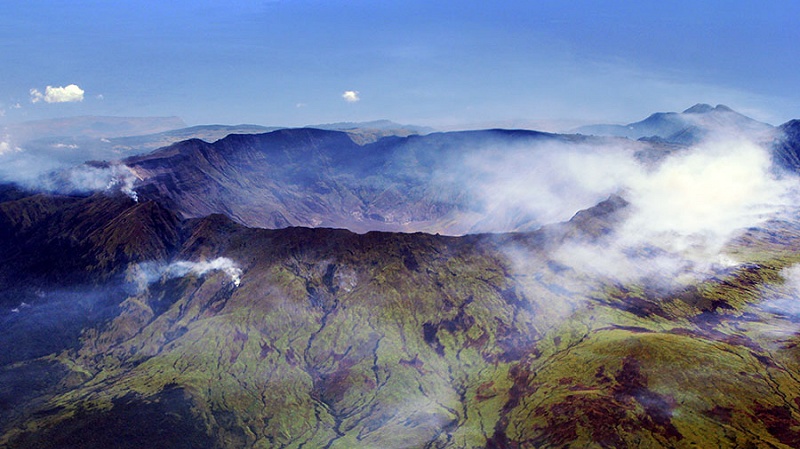
Tambora was once a tall and graceful mountain, as high as Hawaii’s great volcanoes, with a shape as classic as Fujiyama’s. Then, in a series of great eruptions 200 years ago this week, it lost more than one-third of its height and covered a wide swath of today’s Indonesia in choking, toxic ash. It was the most powerful eruption of the last 1000 years, as far as we can tell—our knowledge is far from complete.
At the time, no one in the world was called a scientist. Electricity was a laboratory curiosity. The steam engine was bleeding-edge technology. Indonesia did not have a volcano agency, and it took months before ships brought word from the colonial Dutch East Indies to the rest of the world.
The news that emerged was apocalyptic. The eruption’s roar was heard a thousand miles away. The sun was entirely blotted out for days within about 400 miles of the volcano. Acid rain and layers of fine ash killed the crops, causing widespread famine and disease. Tens of thousands of people were sickened by caustic ash and sulfuric gases. Great sea waves had flooded harbors and coastlines across the East Indies.
Fine ash particles and clouds of sulfuric acid droplets were injected nearly 30 miles up into the stratosphere and carried around the world. The summer of 1815 was marked by persistent red skies and cold days in Europe, North America and China. The weather was even worse in 1816, recorded by history as the year without a summer. Famine in Europe continued for several years more. The decade of the 1810s, as a result, is the coldest on record.
Volcanologists rank Tambora’s eruption as a category 7 in their Volcanic Eruptivity Index scale. It’s the only clear-cut example on the books—so far.
